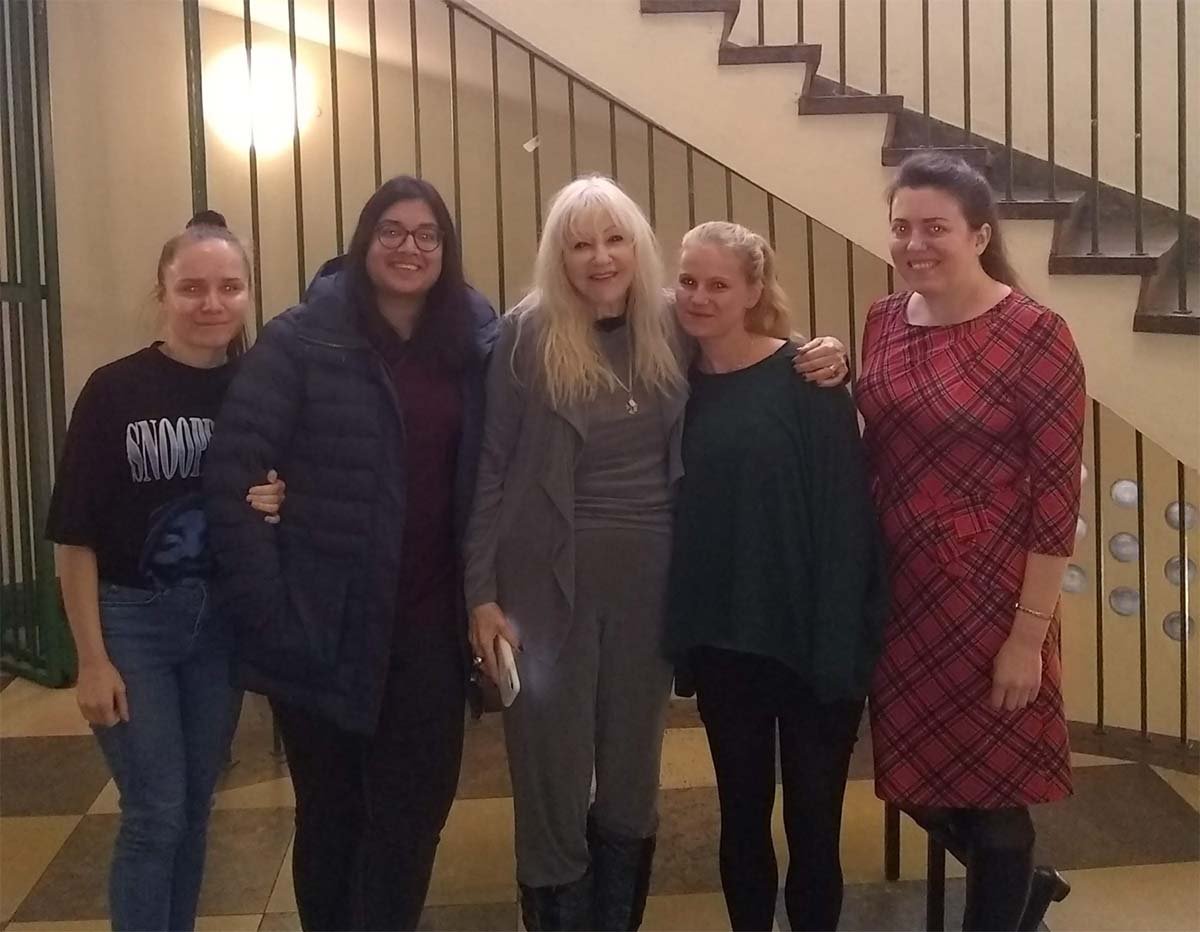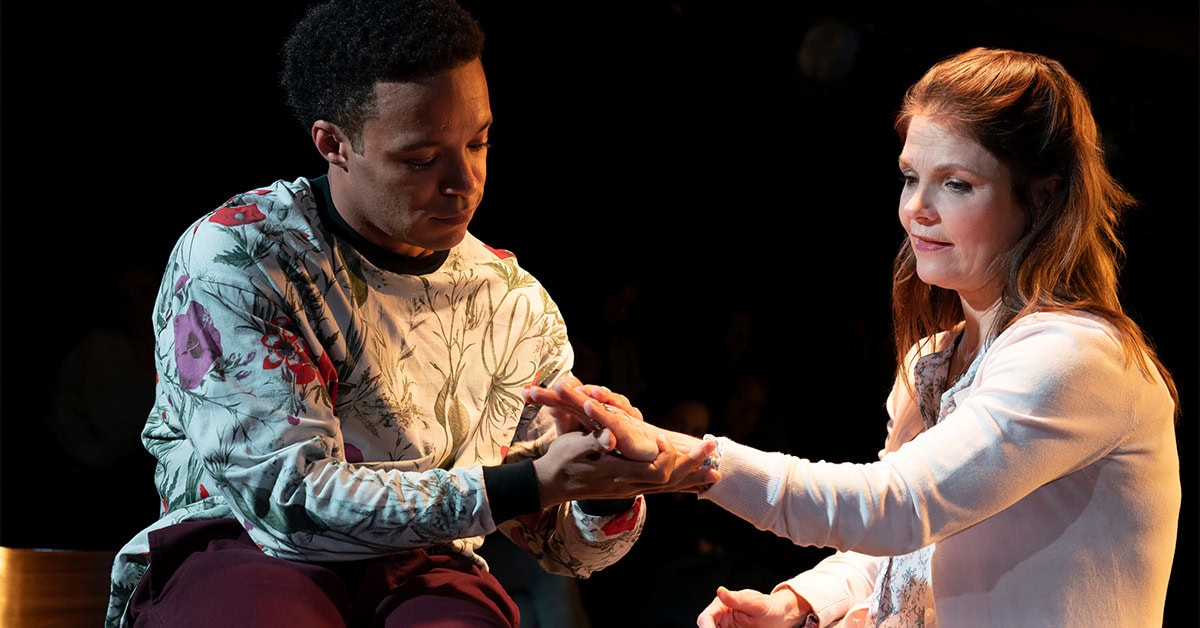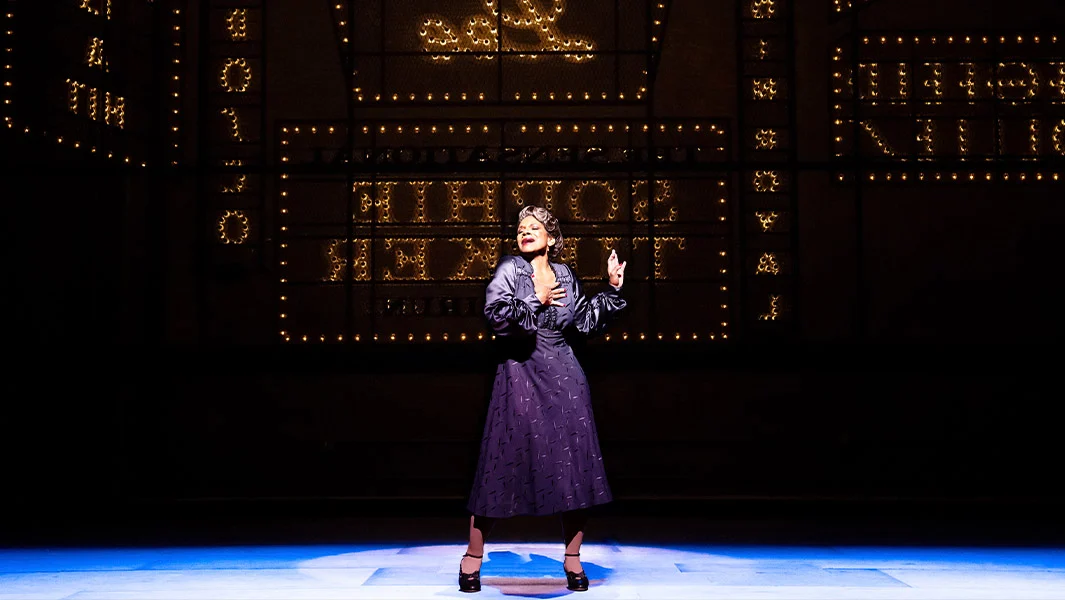
Rosary Hartel O’Neill is a Ph.D.-holding scholar, historian, published author, and produced playwright. Rosary has been the recipient of many Fulbright Specialist Program awards funded by the U.S. State Department and implemented by World Learning.
Rosary was born and raised in New Orleans and previously served as the Founding Artistic Director of the Southern Repertory Theatre. Having a mixed French, Irish, and German ancestry like many New Orleanians, Rosary feels deeply connected to The Big Easy, which informs much of her work. Incredibly, Rosary was unaware of the French-born Degas’ ties to New Orleans until she was well into adulthood. The true story of his ill-fated trip to visit relatives in New Orleans during the Reconstruction Era fascinated her and inspired her to write a play based on the events.
In the Autumn of 2019 Rosary traveled to Bonn, Germany, via the program in order to lecture about the life and work of painter Edgar Degas, who is the subject of her play, Degas in New Orleans. Rosary’s mission at the University of Bonn was to teach graduate students about American drama emphasizing her plays Degas in New Orleans and John Singer Sargent and Madame X, and to do a campus-wide lecture on Degas in New Orleans as part of the American Studies Program. Graduate students and colleagues performed a reading from Degas in New Orleans for a German audience, followed by an enthusiastic Q&A with Rosary.
“There the craft of the acting and directing profession is learned in conservatories, and internship classes with theatres and creative writing is not taught in the university,” Rosary said. “University students have seen, for example, the plays of Tennessee Williams put into films, but they have no idea of the Actors Studio process or actor training of the great personalities that forged such the astonishing acting of Marlon Brando, Marilyn Monroe, Dustin Hoffman, and so forth that inspired such intimate delightful and yes, even shocking performances. Through my Fulbright work, I can offer them a peek into this aspect of the entertainment industry. I love turning students on to America and its great playwrights; Eugene O’Neill, Arthur Miller, Lorraine Hansberry, Tennessee Williams and directors, Elijah Kazan, and more, not to mention the thrill of teaching my own plays and seeing the students connect to and relate to the content! It’s so rewarding to explain how plays are developed in New Orleans and New York and at the Actors Studio and see the astonishment in the eyes of students as they experience how writing about the deeper principles flies across the Atlantic.”
Rosary has enjoyed several Fulbrights and Fellowships to the University of Bonn; the establishment even received her theatre company, The Southern Repertory, and subsequently produced Rosary’s play entitled A Louisiana Gentleman.
“I know the quality of the superb students in the North American Studies department of the University of Bonn,” Rosary chimed. “They speak English with the fluency of your most brilliant graduate student in America and they are so eager to learn. I traveled with a superb colleague student teaching assistant, Nora Wetzel, who made each day of teaching a joy and delightful learning experience.”
Rosary readily noted that many New Orleanians have German roots, which increases the interest of many Bonn residents and made her concept for content appealing to the Fulbright board. When asked why she was so compelled to share the story of Frenchman Edgar Degas with her German audiences, Rosary stated that she was compelled by the fact that Degas’ time in Louisiana is a tale about a stranger – an artist from Europe – who comes to America with the hopes and dreams of confronting a world of opportunity but instead finding only disaster.
“As Founding Artistic Director of Southern Repertory Theatre in New Orleans, I was asked to write a monologue on Degas in conjunction with a major exposition slated for New Orleans in 1999,” Rosary stated, recalling how she stumbled upon the hidden history. “The exhibition was entitled Degas and New Orleans: A French Impressionist in America and would herald in FrancoFete, a celebration of 300 years of French presence in New Orleans. For the first time in history, all of the twenty-four paintings that Edgar Degas had painted in New Orleans were on display.”
Although Degas himself was not nearly as troubled an artist as the likes of Vincent van Gogh and Edgar Allen Poe, his family was not without scandal and that partly explains why his exploits in New Orleans were anything but advertised.
“The story had been hidden because there was a scandal involved,” Rosary explained. “After Edgar Degas left New Orleans, his brother René left his wife and children, remarried bigamously, and returned to Paris. The Degas men — Uncle René and brother Edgar — had abandoned their relatives in post-Civil war New Orleans. The family was so horrified that they changed all the heirs’ names back to the mother’s maternal name, Musson. Name reversion was a traditional Southern custom that still goes on today.”
For approximately one hundred years, no one knew the Degas story until a tombstone bearing the name “Degas” was uncovered. The grave belonged to a child that had died before the name reversion and this led to the revelation that there are actually about thirty descendants — some white and some black — of Edgar Degas who are still living in New Orleans. The story compelled the historian in Rosary and she began to vigorously research the events, even taking her studies abroad to London and Paris where Degas’ work hangs in the Louvre.
“In pre-Katrina New Orleans, all the records were available and Edgar Degas’ letters in French were kept in the Tulane University Library,” she declared. “Edgar was the only French impressionist painter with an American parent. His father, who owned banks in Naples and Florence, financed the Confederacy and ultimately went broke doing so. Edgar had his then wealthy father’s support to come to Louisiana to check on his father’s investments in his uncle’s cotton business, and to paint. Edgar had romanticized the city for a long time. His mother was from New Orleans and although she had died in Paris when he was 12 years old, her memory still haunted him. He was wistful for her people including his three female cousins – especially Telle – who looked so much like his mother. The girls had spent four years in Paris with Degas’ family following the New Orleans tradition of protecting women during wartime by sending them to France. Telle, young, beautiful, widowed from a marriage to a Civil War hero, a nephew of the President of the Confederacy, met Edgar and they developed a great and abiding passion in Paris.”
From what Rosary gathered during her investigation, the three female New Orleans cousins had arrived in Paris with plenty of leisure and Edgar escorted them to the opera, the races, the symphony, theatre openings, and luxurious dinners. Fr
om them, he heard about New Orleans which, prior to the Civil War, had been as cultured as New York City. Painters like Audubon had been discovered in Louisiana and great architects were actively building a mini-Paris.
“In 1872, when Degas arrived in America, artists were pioneers but in France, the chosen were adulated, veritable gods,” Rosary explained. “Yet, back then, Edgar had not yet ascended in Paris. He was not yet known or regaled as he would become later in life. Through my research, and then my play, I wanted to sense how Edgar felt when he came to New Orleans 140 years ago. I went to Esplanade Avenue, which is eleven blocks from the French Quarter and stood on the very street where Edgar had lived. The bohemian area exhibits a similar character to the one existing post-Civil War. Essentially, there are still fantastic mansions situated near rundown houses.”
For six months, Rosary rented rooms in Edgar’s family home since The Degas House is now a bed and breakfast. She lived and wrote from every corner of the house. She wanted to experience how Edgar felt living and painting in each area. Most befittingly, her play premiered at the Degas House followed by a performance at the New Orleans Museum of Art.
Rosary is candid about the fact that her play, although strongly rooted in history, is a work of fiction. It focused on the concept that Edgar and his married cousin, Telle, may have been secretly in love, although the exact details of their actual relationship remain unknown.
“I found out that Degas’ cousins — the Mussons — had rented the house on Explanade and this was where Edgar did most of his paintings. His family, which was connected to the highest echelons of the Confederacy, had lost everything, including their magnificent Garden District home and their huge plantation upriver. The house on Esplanade might be considered spacious if all the 18 relatives of Edgar’s family and their servants hadn’t been crowded into it. I had wanted to create a love story between Edgar and Didi, his single cousin, but research showed that the cousin he adored was his married sister-in-law, Telle. All the lustful details of that attraction I have magnified. There was my story. I also felt comfortable writing about Edgar and Telle because I myself had left the world of the blue-bloods to become an artist, but still, I knew it in my marrow. I also understood what it felt like to be an outsider as an artist. Returning to the city after having lived in New York and Los Angeles, I had to found my own theatre company to create a forum for my work.”
Whether New Orleans was the base that launched Degas as an Impressionist painter is unclear, but through his cousins, his mother’s love was reborn. Legend has it that the paintings of those family members surrounded his bed when he died and although his Uncle had begged him to send the portraits (or at least copies of them) back to New Orleans, Edgar never did.
“The breach with New Orleans was final,” Rosary declared. “Edgar put his personal relations and love second and his painting first. He did rescue his father from bankruptcy by drawing and selling hundreds of pastels because that was the quickest art form, but he never returned to New Orleans. Certainly, I think we can forgive any personal errors he might have made there because of the twenty-four masterpieces he left behind. His paintings created a universe he could control as opposed to the one in Louisiana that he could not. And Paris took him back and, finally, recognized his genius.”
…
For more from Rosary O’Neill, click here.
(photo: Rosary O’Neill)

College Theatre: Picks for Your 2025/26 Season

Unlikely Friendships in Plays

